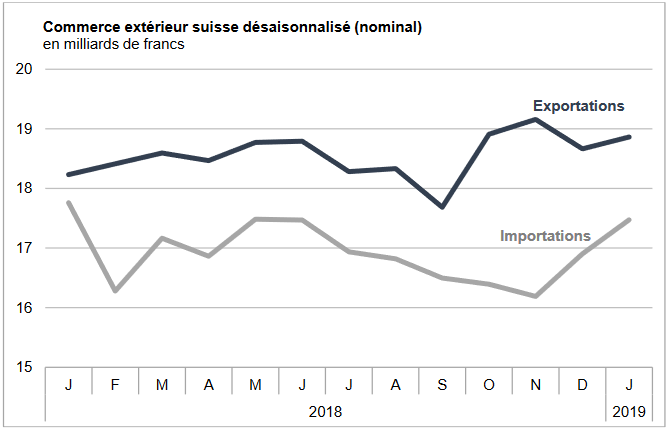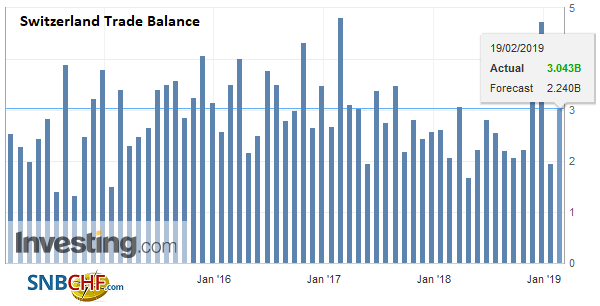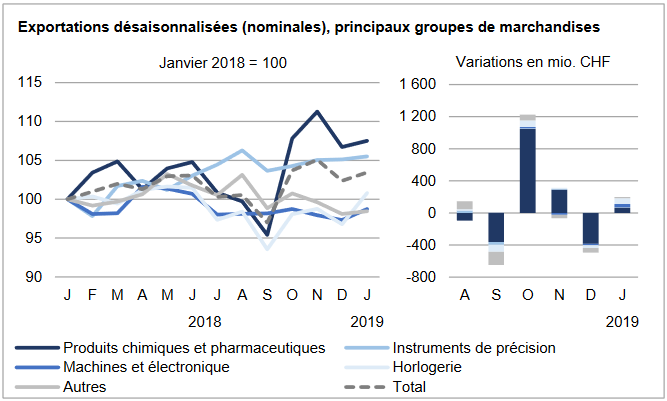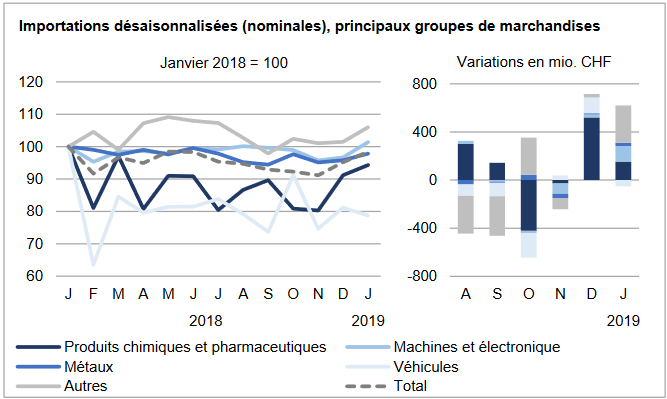We do not like Purchasing Power or Real Effective Exchange Rate (REER) as measurement for currencies. For us, the trade balance decides if a currency is overvalued. Only the trade balance can express productivity gains, while the REER assumes constant productivity in comparison to trade partners.
Who has read Michael Pettis, knows that a rising trade surplus may also be caused by a higher savings rate while the trade partners decided to spend more. This is partially true. Recently Europeans started to increase their savings rate, while Americans reduced it. This has led to a rising trade and current surplus for the Europeans. But also to a massive Swiss trade surplus with the United States, that lifted Switzerland on the U.S. currency manipulation watch list.
To control the trade balance against this “savings effect”, economists may look at imports. When imports are rising at the same pace as GDP or consumption, then there is no such “savings effect”.
After the record trade surpluses, the Swiss economy may have turned around: consumption and imports are finally rising more than in 2015 and early 2016. In March the trade surplus got bigger again, still shy of the records in 2016.
Swiss National Bank wants to keep non-profitable sectors alive
Swiss exports are moving more and more toward higher value sectors: away from watches, jewelry and manufacturing towards chemicals and pharmaceuticals. With currency interventions, the SNB is trying to keep sectors alive, that would not survive without interventions.
At the same time, importers keep the currency gains of imported goods and return little to the consumer. This tendency is accentuated by the SNB, that makes the franc weaker.
Texts and Charts from the Swiss customs data release (translated from French).
Exports and Imports YoY DevelopmentSwiss foreign trade started the year 2019 in a positive way. Seasonally adjusted exports rose by 1.1% to 18.9 billion francs and imports by 3.4% to 17.5 billion. The trade balance closed with a surplus of 1.4 billion francs. ▲ Dynamic exchanges with Asia |
Swiss exports and imports, seasonally adjusted (in bn CHF), January 2019(see more posts on Switzerland Exports, Switzerland Imports, ) Source: news.admin.ch - Click to enlarge |
Overall EvolutionOn a seasonally adjusted basis, after their plunge in December 2018, exports rose by 1.1% (real: + 0.6%) in January 2019 to reveal an uptrend since October 2018. As in the previous month, imports have shone; up 3.4% (real: + 4.8%), they amounted to 17.5 billion francs, thus recovering their level of mid-2011. The trade balance closes with a surplus of 1.4 billion francs. |
Switzerland Trade Balance, January 2019(see more posts on Switzerland Trade Balance, ) Source: Investing.com - Click to enlarge |
ExportsLower European and North American demand The growth in exports was largely sustained in January 2019. Watch sales surged (+ 4.2%), confirming their dynamism posted since October 2018. After two months of sluggishness, the machinery and electronics sector picked up again (+ 1.5%). The 0.7% increase in chemicals and pharmaceuticals reflects only the strong demand for immunological products (+259 million francs). Globally, the flagship is showing a positive trend since October 2018. Precision instruments (+ 0.4%) continued their slow progression for the fourth consecutive month. A disparate evolution characterized the three main markets. Exports jumped 9.3% to Asia, after falling 7% in December 2018, while exports to Europe and North America fell by 1.3% and 3.2%, respectively. The North American continent, however, has a slightly positive trend over the last twelve months. Over the same period, exports to Asia show a slowdown. Exports to China have been highly volatile for several months; in January 2019, they swelled by 11.1%. On the Old Continent, while Germany, Austria and the Netherlands have made progress, France, Ireland and the United Kingdom have suffered a setback. |
Swiss Exports per Sector January 2019 vs. 2018(see more posts on Switzerland Exports, Switzerland Exports by Sector, ) Source: news.admin.ch - Click to enlarge |
ImportsGood of Ireland and fall of the United Kingdom Growth in imports was reported in three sectors: jewelery (+174 million francs, “other goods” group), chemicals and pharmaceuticals (+153 million) and the machinery and electronics sector (+130 million). In January 2019, however, the Lachimie-Pharma entries recorded significant volatility on a year and were below their established record twelve months earlier. The vehiclesector has also evolved heterogeneously over the same period. Amongst the three main supply markets, import trends were fortunate in January 2019. The rise of Asia (+ 5.8%) and the stagnation of Europe (+ 0.4%) were contrasted with the American replinord (-4.3%, Canada). The Asian rise was heavily weighted on the United Arab Emirates (+488 million francs) and China (+169 million). In Europe, shipments from Ireland – like the two previous months – took the elevator (+190 million) while those from the United Kingdom fell by a third (-212 million). |
Swiss Imports per Sector January 2019 vs. 2018(see more posts on Switzerland Imports, Switzerland Imports by Sector, ) Source: news.admin.ch - Click to enlarge |
Full story here Are you the author? Previous post See more for Next post
Tags: newsletter,Switzerland Exports,Switzerland Exports by Sector,Switzerland Imports,Switzerland Imports by Sector,Switzerland Trade Balance
































